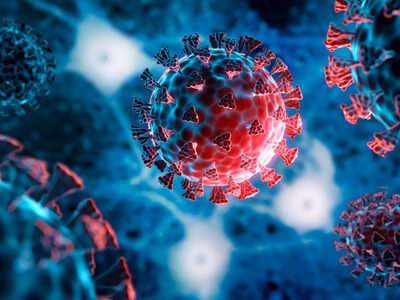The Delhi-NCR region is experiencing a sharp rise in H3N2 influenza cases. While seasonal flu is not uncommon during weather transitions, doctors note that this year’s outbreak is particularly intense. What makes H3N2 concerning is its longer recovery period, higher complication risks, and its impact on vulnerable groups such as children, the elderly, and people with chronic illnesses.
Why H3N2 feels different from normal flu
On the surface, H3N2 looks like regular flu: fever, cough, sore throat, and runny nose. But the difference lies in the duration and intensity of symptoms. Unlike seasonal flu, which usually subsides in three to four days, H3N2 often lingers for over a week, leaving behind prolonged weakness even after the fever comes down. Many patients report persistent cough and fatigue, which delays recovery.Dr Mayanka Lodha Seth, Chief Pathologist at Redcliffe Labs, explains“H3N2 shares many similarities with seasonal flu; the symptoms tend to last longer, with patients reporting persistent fever, cough, sore throat, and prolonged weakness even after initial recovery.”
The groups at highest risk
Not everyone faces the same level of risk. H3N2 tends to hit harder in groups with weaker immunity.Children under five have an immature immune system, making it harder for their bodies to fight the virus. Their close contact in schools and playgrounds also spreads the infection quickly.Elderly individuals, especially those above 60, often have existing health conditions such as diabetes, hypertension, or chronic lung disease. Their declining immunity increases the chances of complications like pneumonia.People with chronic illnesses such as asthma, COPD, diabetes, or heart disease face a higher likelihood of severe symptoms and longer recovery.Dr Mayanka adds, “Children and older adults are at the frontline of risk due to their tenuous immunity. Awareness and early action can make all the difference in reducing complications.”

Why Delhi-NCR is seeing a spike
The rise in H3N2 is not just a coincidence. Seasonal transitions, with sharp swings in temperature, create favourable conditions for viral growth. At the same time, Delhi’s high air pollution weakens respiratory immunity, making it easier for infections to spread.Another factor is the post-pandemic immunity gap. After years of reduced exposure to common viruses due to masking and distancing, the body’s natural resistance, especially in children, has declined. Crowded urban living further accelerates the spread, turning isolated cases into widespread outbreaks.
Symptoms that need close watch
Most H3N2 cases start with high fever and chills, followed by cough, sore throat, runny nose, and body aches. Headaches and fatigue are also common. In children, gastrointestinal issues like nausea, vomiting, and diarrhoea can occur.Warning signs that demand immediate medical help include:
- Shortness of breath or chest pain
- Severe vomiting or dizziness
- Persistent high fever beyond four days
- Extreme weakness
Doctors emphasise not to ignore these symptoms, as they may point to complications such as pneumonia.
Daily habits also help lower risks:
- Frequent handwashing for at least 20 seconds
- Wearing masks in crowded or air-conditioned spaces
- Ventilating rooms and avoiding damp environments
- Eating vitamin C-rich foods such as oranges, lemons, and amla
Disclaimer: This article is for informational purposes only and should not be taken as medical advice. For diagnosis or treatment, consult a qualified healthcare professional.













































